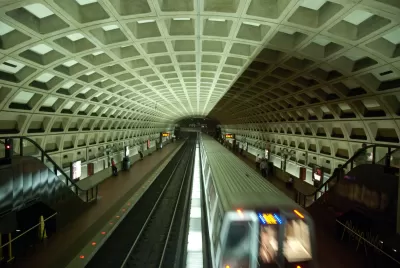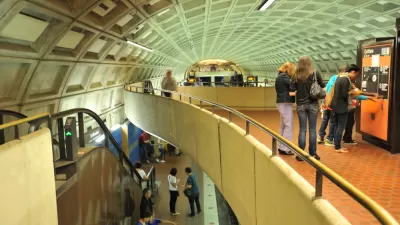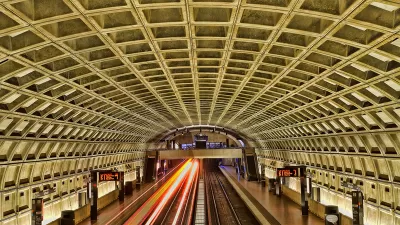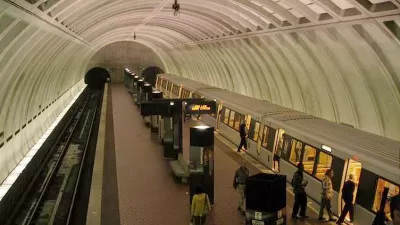A decrease in ridership is not disputed. However, ideas about the best solutions for turning things around abound.

Faiz Siddiqui reports on the ridership challenges Metro is facing in the Washington, D.C. area. The system is grappling with a ridership decrease averaging 125,000 daily riders over the last 10 years. Younger riders, ages 18 to 29 in particular, are using other modes and riding less on the weekends.
Paul J. Wiedefeld, Metro's general manager, ties ridership declines to factors outside the system, including lower fuel prices and telecommuting. However, one study pointed to service as the primary issue driving people away from Metro.
More than a year after Metro cut late-night service and reduced the frequency of trains on five of six lines amid chronic safety and reliability problems, ridership has plunged to 2001 levels. Now that the agency has secured $500 million a year in dedicated funding for capital needs, riders and their advocates say it's time to shift the focus to restoring some of that service to win back customers.
But Metro board members do not agree about which service improvements the agency should pursue. Some feel that restoring late-night and off-peak service should be the focus. Others believe the problem is reliability and increased headways, particularly at night. Still others say competition from ride-hailing services is the big concern and have proposed requesting more funding from local jurisdictions to subsidize service.
FULL STORY: When it comes to reversing the ridership slide, Metro’s leaders don’t have a plan

Alabama: Trump Terminates Settlements for Black Communities Harmed By Raw Sewage
Trump deemed the landmark civil rights agreement “illegal DEI and environmental justice policy.”

Planetizen Federal Action Tracker
A weekly monitor of how Trump’s orders and actions are impacting planners and planning in America.

The 120 Year Old Tiny Home Villages That Sheltered San Francisco’s Earthquake Refugees
More than a century ago, San Francisco mobilized to house thousands of residents displaced by the 1906 earthquake. Could their strategy offer a model for the present?

In Both Crashes and Crime, Public Transportation is Far Safer than Driving
Contrary to popular assumptions, public transportation has far lower crash and crime rates than automobile travel. For safer communities, improve and encourage transit travel.

Report: Zoning Reforms Should Complement Nashville’s Ambitious Transit Plan
Without reform, restrictive zoning codes will limit the impact of the city’s planned transit expansion and could exclude some of the residents who depend on transit the most.

Judge Orders Release of Frozen IRA, IIJA Funding
The decision is a victory for environmental groups who charged that freezing funds for critical infrastructure and disaster response programs caused “real and irreparable harm” to communities.
Urban Design for Planners 1: Software Tools
This six-course series explores essential urban design concepts using open source software and equips planners with the tools they need to participate fully in the urban design process.
Planning for Universal Design
Learn the tools for implementing Universal Design in planning regulations.
Clanton & Associates, Inc.
Jessamine County Fiscal Court
Institute for Housing and Urban Development Studies (IHS)
City of Grandview
Harvard GSD Executive Education
Toledo-Lucas County Plan Commissions
Salt Lake City
NYU Wagner Graduate School of Public Service





























